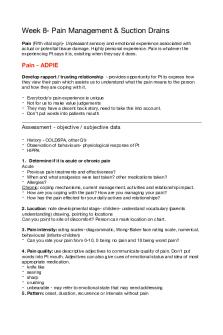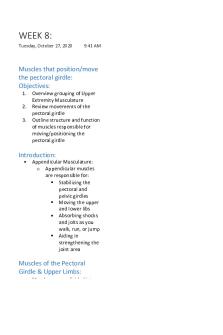World economy week 8 - Lecture notes 4.3, 4.4 PDF

| Title | World economy week 8 - Lecture notes 4.3, 4.4 |
|---|---|
| Course | The World Economy: History & Theory |
| Institution | The University of Warwick |
| Pages | 2 |
| File Size | 89.3 KB |
| File Type | |
| Total Downloads | 25 |
| Total Views | 66 |
Summary
Inequality and living standards: If markets efficient and property rights well specified, inequality is irrelevant to standards of living, however, markets may fail and access to institutions may be inequal o Government may redistribute or provide, however, costly and inefficient o Lorenz Curve: o ...
Description
Inequality and living standards:
If markets efficient and property rights well specified, inequality is irrelevant to standards of living, however, markets may fail and access to institutions may be inequal o Government may redistribute or provide, however, costly and inefficient o Lorenz Curve: o Gini closer to 1 = more unequal Inner area / triangle
o
Difficult to find precise records Underlying causes of inequality gleaned from changes in relative incomes of skilled/unskilled workers
Kuznets curve:
Inequality fell in developed countries in first half of 20th C o Kuznets assumed it rose before it fell
Reasons for initial rise: o Engels pause o Rise in inequality from concentration in savings at top end of distribution o K ownership more concentrated whereas Labour ownership more dispersed resulting in stalling real wages Reasons for fall: o Rising education increases income earning opportunities beyond subsistence
o Wider range of income sources Growth may not result in curve: o Critiques: used 1900-1950 data WWI, Great Depression, WWII unusual events o
More robust idea: technological change causes inequality Goldin and Katz
Lindert 1986:
Supports Kuznets view: o IR concentrated benefits to merchants and landowners o Constant inequality/worsening in late 19th C o Massive declines in 20th C Relative importance of land as revenue generating asset declines over time, while movable wealth (personalty) rises
Social mobility in industrial England:
Clark and Cummins 2014: o IR brought new occupations and moved people out of agriculture Linked father and son occupations From marriage records, shows some social mobility, e.g. 65% with unskilled fathers have unskilled sons as well o However, son’s occupation after marriage may not be final
Linked father and sons through censuses: More mobility (21% vs 65%), however, still not very large, with 1% sons of unskilled ending up in professional class
o
Compared to recent data Britain 1972 More mobility shown, modest at upper end, 8% remained unskilled at lower end
o
Surname method: Some surnames common in all statuses with same frequency, some disproportionately represented by elite If frequency of rarer surnames declines over time, mobility is high
Common names in IR shown to remain relatively the same, rarer names shown to pull away and towards mean so does not show much about inequality o Rarer names remain, however, much more prevalent in elite groups showing high status families remained in high status Little change in social mobility...
Similar Free PDFs

Module 44 - Lecture notes 44
- 3 Pages

Week 8 - Lecture notes 8
- 6 Pages

Week 8 - Lecture notes 8
- 23 Pages

WEEK 8 - Lecture notes 8
- 10 Pages

Week 8 - Lecture notes
- 3 Pages

4 - Lecture notes Week 8
- 2 Pages

GBCM Week 8 - Lecture notes 8
- 8 Pages

Week 8, Part 2 - Lecture notes 8
- 5 Pages

GRE Plan - Lecture notes 44
- 3 Pages
Popular Institutions
- Tinajero National High School - Annex
- Politeknik Caltex Riau
- Yokohama City University
- SGT University
- University of Al-Qadisiyah
- Divine Word College of Vigan
- Techniek College Rotterdam
- Universidade de Santiago
- Universiti Teknologi MARA Cawangan Johor Kampus Pasir Gudang
- Poltekkes Kemenkes Yogyakarta
- Baguio City National High School
- Colegio san marcos
- preparatoria uno
- Centro de Bachillerato Tecnológico Industrial y de Servicios No. 107
- Dalian Maritime University
- Quang Trung Secondary School
- Colegio Tecnológico en Informática
- Corporación Regional de Educación Superior
- Grupo CEDVA
- Dar Al Uloom University
- Centro de Estudios Preuniversitarios de la Universidad Nacional de Ingeniería
- 上智大学
- Aakash International School, Nuna Majara
- San Felipe Neri Catholic School
- Kang Chiao International School - New Taipei City
- Misamis Occidental National High School
- Institución Educativa Escuela Normal Juan Ladrilleros
- Kolehiyo ng Pantukan
- Batanes State College
- Instituto Continental
- Sekolah Menengah Kejuruan Kesehatan Kaltara (Tarakan)
- Colegio de La Inmaculada Concepcion - Cebu






